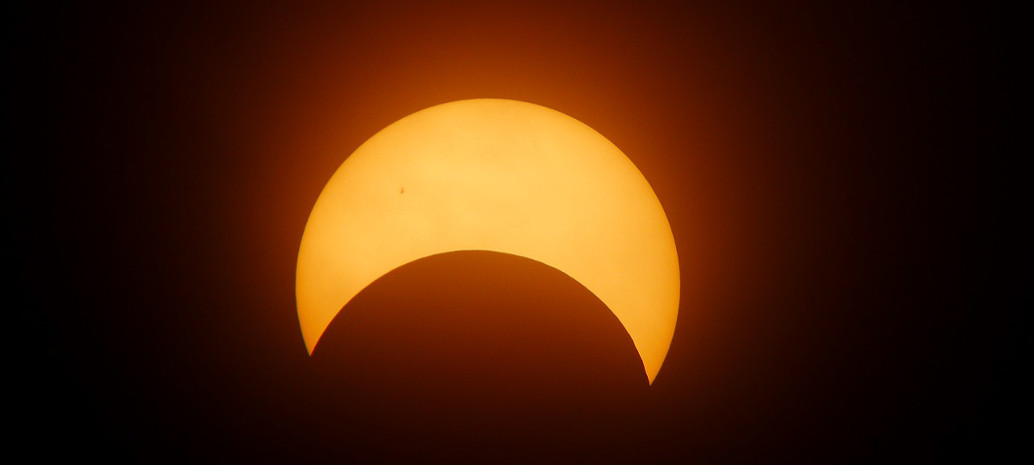From pv magazine Germany
The more photovoltaic systems are installed, the more relevant are precise forecasts of how their feed-in will develop in the event of weather events such as solar eclipses. Extreme meteorological events in particular pose major challenges to secure network operation.
Researchers at the Fraunhofer Institute for Energy Economics and Energy System Technology (IEE) in Germany have addressed this issue by developing a new forecast methodology that will soon be tested under real conditions. On October 25, in fact, there will be a partial solar eclipse in Central Europe, which will significantly reduce the photovoltaic feed-in. So far, such rare extreme events have not been routinely included in weather forecasts.
The scientists claim their solution is able to combine the degree of coverage specifically for location and time with all important weather forecasts. This would allow regional and local PV feed-in forecasts to be optimally adjusted in the future, with minimal errors.
Although the effect of the solar eclipse is slower and smaller than the influence of changing clouds, it still plays a significant role in the result. Volatile self-consumption also has a massive effect on the feed-in profile of photovoltaic systems, which can be forecast separately, according to the researchers.
Fraunhofer IEE validated its results with the data from the eclipse that occurred in Central Europe on June 10, 2021, in two steps: through ground-based measurement of global radiation based on data from German weather service DWD and feed-in measurements from thousands of photovoltaic power plants that are used for extrapolation and forecasting processes. The simulation also included weather forecasts and performance data from Fraunhofer IEE. The solution is also available as an algorithm or software for direct integration with the user.
The researchers are considering the proposed methodology as a tool to further strengthen the grid integration of renewable energy sources in Germany. For new locations or regions that have not yet been measured, an extrapolation process is possible by using current measurements from comparable areas and systems.
The October solar eclipse, with a 25% degree of coverage, will be about twice as strong as the result in June 2021, according to the researchers. Weather forecasts a few days beforehand are expected to provide information about cloud density and the effects the solar eclipse may ultimately have.
“In addition to the already good forecast models for the feed-in of individual photovoltaic parks or entire portfolios — including self-consumption — an important contribution can be made to avoiding or reducing errors,” said Rafael Fritz of Fraunhofer IEE.
This content is protected by copyright and may not be reused. If you want to cooperate with us and would like to reuse some of our content, please contact: editors@pv-magazine.com.




3 comments
By submitting this form you agree to pv magazine using your data for the purposes of publishing your comment.
Your personal data will only be disclosed or otherwise transmitted to third parties for the purposes of spam filtering or if this is necessary for technical maintenance of the website. Any other transfer to third parties will not take place unless this is justified on the basis of applicable data protection regulations or if pv magazine is legally obliged to do so.
You may revoke this consent at any time with effect for the future, in which case your personal data will be deleted immediately. Otherwise, your data will be deleted if pv magazine has processed your request or the purpose of data storage is fulfilled.
Further information on data privacy can be found in our Data Protection Policy.